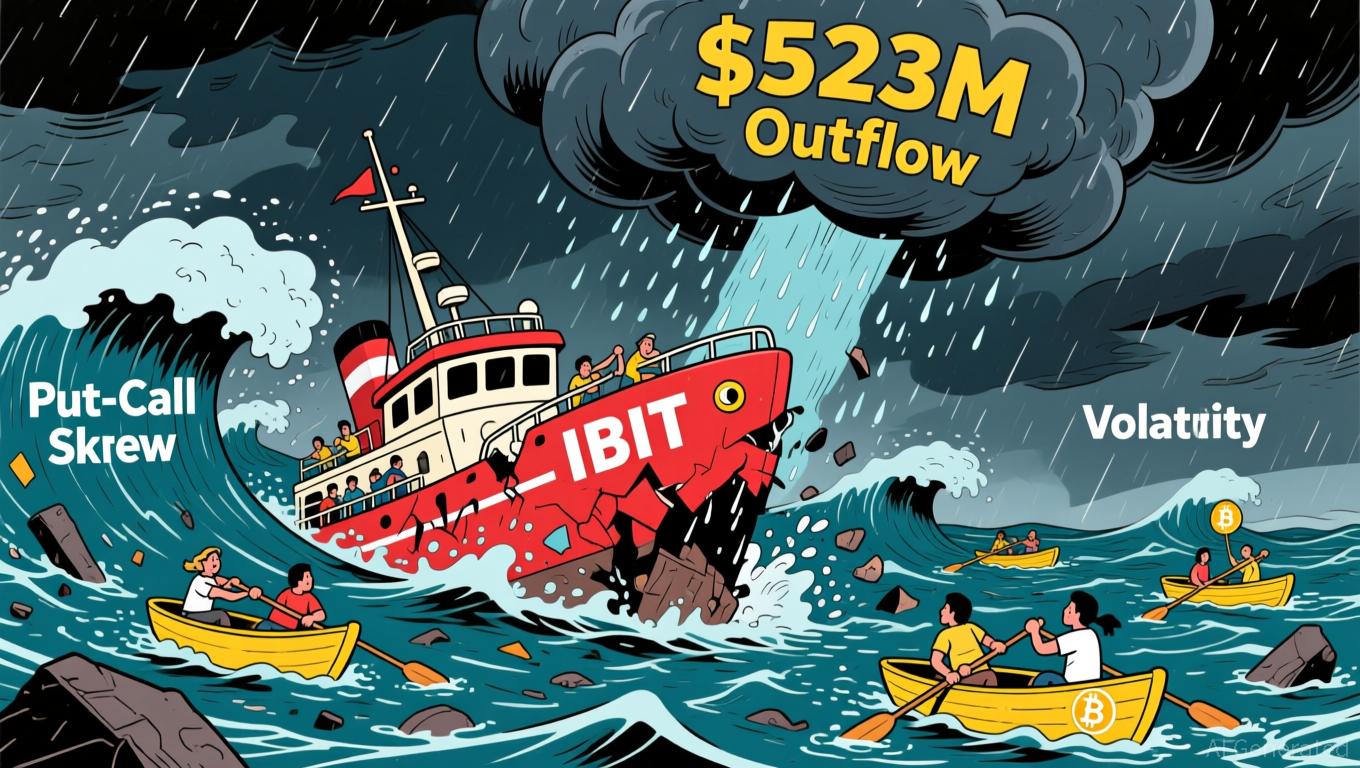Vitalik Buterin Backs ZKsync: Strategic Impact on Ethereum Layer-2 Landscape and Future Value
- Vitalik Buterin's endorsement of ZKsync's Atlas upgrade boosts ZKsync's profile as a key Ethereum scaling solution. - The upgrade enables 15,000 TPS with near-instant finality, reducing gas fees by 90% and attracting $15B in institutional inflows. - ZKsync's ZK-rollup technology outperforms Optimism/Arbitrum with faster finality, lower fees, and EVM compatibility for seamless app migration. - Ethereum's 2025 roadmap prioritizes ZK-based scaling, aligning with Deutsche Bank's adoption of ZKsync for compli
ZKsync's Atlas Upgrade: Driving Scalability and Liquidity
Launched in 2025, the Atlas upgrade represents a major advancement for ZKsync. With the ability to process more than 15,000 transactions per second (TPS) and deliver nearly instant finality, this upgrade
Buterin’s support has boosted ZKsync’s profile,
Comparative Advantages: ZKsync vs.
Optimism
and Arbitrum
Although ZKsync, Optimism, and
In contrast, Arbitrum and Optimism utilize optimistic rollups, which presume transaction validity unless disputed. While this approach enables high throughput—
Institutional Adoption and Ethereum's Roadmap
Buterin’s backing has accelerated the institutional embrace of ZK-based scaling.
Ethereum’s future vision is closely tied to ZK-based scaling. The network’s evolution toward a modular structure—where rollups manage execution and Ethereum focuses on data availability and consensus—has become a reality
Strategic Implications for Ethereum's Value
ZK-based scaling is more than a technical enhancement—it is essential for Ethereum’s sustained value. By supporting thousands of rollups and specialized Layer 3s, Ethereum is transforming into a “data availability layer” that underpins a wide array of modular systems
Additionally, ZKsync’s achievements underscore the necessity of ongoing innovation for Ethereum to maintain its lead. While Optimism and Arbitrum currently hold the largest TVL, ZKsync’s emphasis on privacy, speed, and robust infrastructure for institutions positions it as a major contender in Ethereum’s next chapter.
Conclusion: A New Era for Ethereum
Vitalik Buterin’s support for ZKsync is more than just approval—it marks a clear direction for Ethereum’s future. The Atlas upgrade has proven the effectiveness of ZK-rollups in solving scalability and liquidity issues, and Buterin’s influence has hastened institutional involvement. As Ethereum’s roadmap progresses, ZK-based scaling will be central to keeping the network competitive in the fast-changing blockchain world. For investors, the intersection of technical progress, institutional interest, and regulatory compatibility makes ZKsync a standout example of the future of decentralized infrastructure.
Disclaimer: The content of this article solely reflects the author's opinion and does not represent the platform in any capacity. This article is not intended to serve as a reference for making investment decisions.
You may also like
Bitcoin News Update: Japan's Bond Turmoil Triggers Worldwide Crypto Sell-Off Amid Yen Carry Trade Reversal
- Japan's $135.4B stimulus package triggered a 3.41% surge in 30-year bond yields, destabilizing the $20T yen carry trade and sparking global crypto/stock selloffs. - Rising yields threaten Japan's 230% GDP debt load with higher servicing costs, creating a "debt death spiral" risk as BOJ hesitates to tighten policy. - Forced deleveraging by financial institutions intensified Bitcoin's 26% drop, with Ethereum/XRP/Solana also falling 3-5.6% amid margin calls and capital repatriation. - Upcoming 40-year bond

Bitcoin News Today: Bitcoin ETFs See $523M Outflow as Investors Weigh Fear Against Long-Term Strategies
- BlackRock's IBIT ETF recorded a $1.26B net outflow in Nov 2025, its largest redemption since 2024 launch. - Bitcoin price fell 16% to $52, triggering $2.59B outflows across 11 spot ETFs as bearish options demand surged. - Put-call skew hit 3.1% (7-month high), reflecting heightened pessimism and capitulation pressures in Bitcoin's price action. - Gold ETFs gained $289M as investors sought safe havens, contrasting with $1B inflows to tech/healthcare sector funds. - Year-to-date Bitcoin ETF inflows ($27.4B

YFI Drops 1.7% After Subpar Weekly Results as Edgewater Showcases AI-Powered Wi-Fi at Canada’s Leading Semiconductor Conference
- Edgewater Wireless will showcase AI-powered Wi-Fi 8 solutions at Canada’s premier semiconductor symposium in November 2025. - The company’s CEO will highlight ultra-reliable wireless roadmaps and a $2.4M commercialization initiative supported by $921K in government grants. - Its patented Spectrum Slicing technology claims 10x performance gains and 50% latency reduction, aligning with Canada’s semiconductor self-sufficiency goals. - Despite a 11.85% monthly stock decline, Edgewater positions itself at the

Ethereum Updates Today: Ethereum Transforms into Digital Bonds, Soaring Above $3,000 Driven by Institutional Interest
- Ethereum surged past $3,000 in late 2025 driven by institutional demand, ETF approvals, and technical upgrades like the Fusaka upgrade. - BlackRock's staked Ethereum ETF attracted $13.1B inflows since 2024, reclassifying staked ETH as "digital bonds" for institutional investors. - Over 69 corporations now hold 4.1M ETH in treasuries, but ETF outflows highlight ongoing market differentiation from Bitcoin . - Fusaka's focus on layer-1 scalability aims to redirect economic activity to Ethereum's base layer